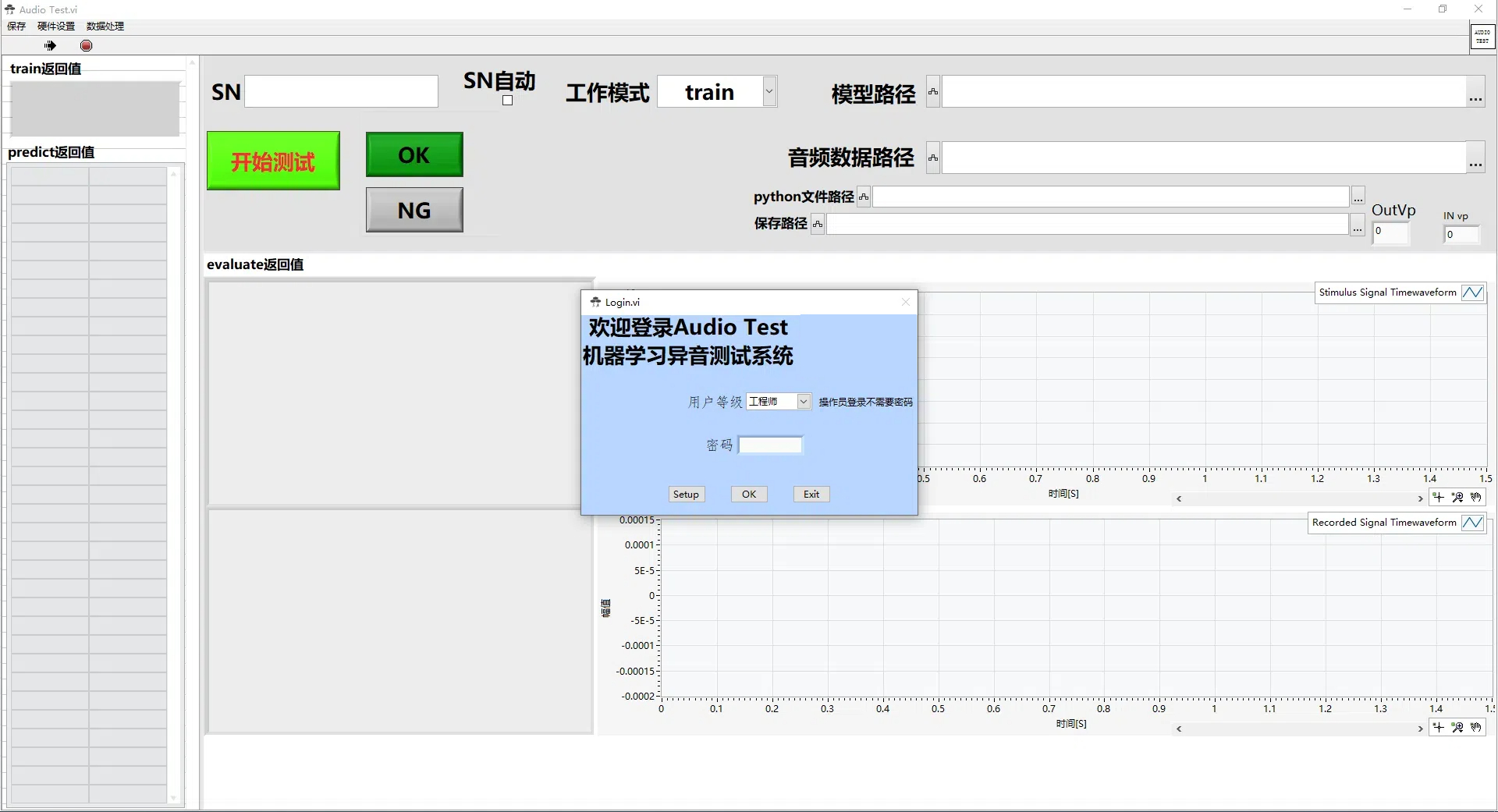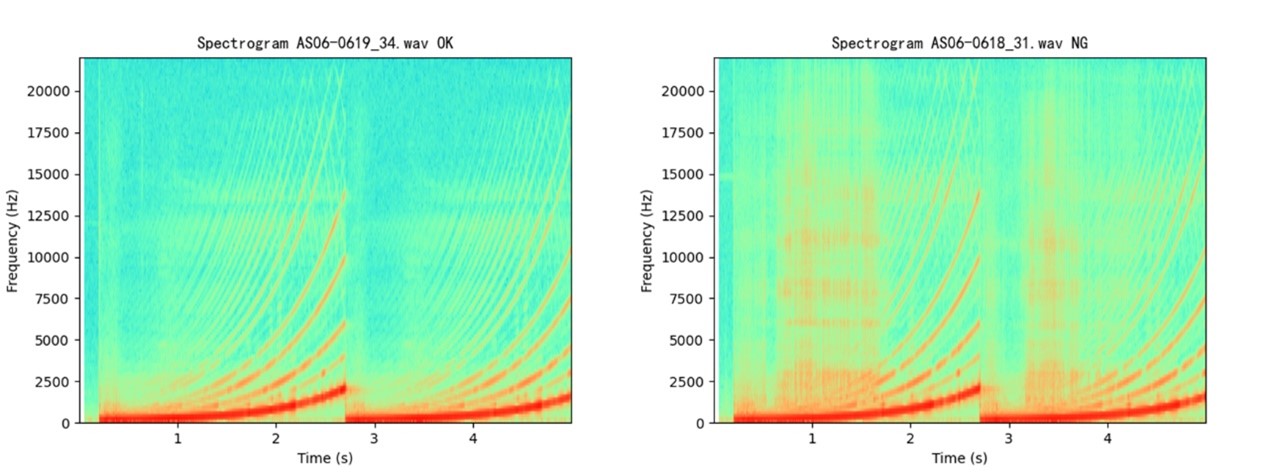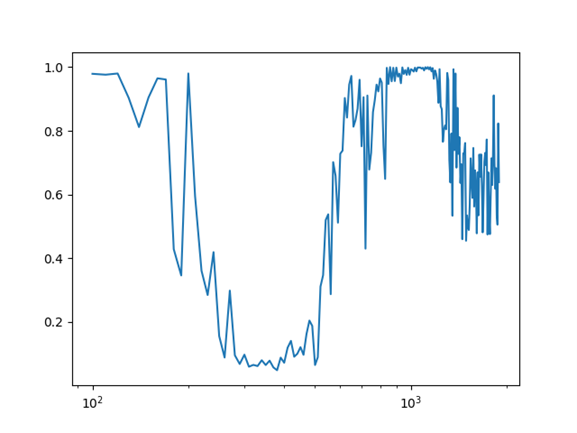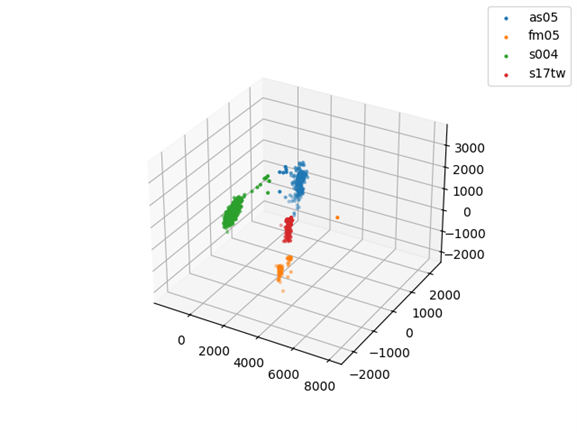AI-based Machine Hearing System
An AI-based machine hearing system is an intelligent system that leverages deep learning and signal processing technologies to simulate and enhance human auditory capabilities, enabling high-precision sound recognition, classification, and analysis.

The Dongyuan Machine Hearing Testing System allows you to develop or modify existing tests, with all test steps modularly added to your testing workflow. A test workflow consists of multiple steps, each performing a specific task. A very simple test workflow may have the following structure:
Many other types of steps are available, including post-processing, printing, statistics, etc. This allows users to easily create complex test sequences and apply them to the DUT to obtain the required measurement results and analysis data.
SOFTWARE FEATURES
Artificial Intelligence Signal Analysis
Utilizing the latest acoustic deep neural network architecture, this system performs audio recognition and analysis with higher accuracy, faster analysis speed, broader applicability, and greater scalability.
Modular Design
All test steps can be modularly imported or customized according to your needs.
External Expansion
The Dongyuan Machine Hearing Testing System supports external command control using the JSON data format, allowing command responses to be easily parsed by any programming language. The system can be accessed and operated through this API.

Spectrogram Analysis


SOFTWARE FEATURES
Time Frequency Analysis
Detailed signal analysis is carried out simultaneously in both the time and frequency domain, which is ideal for impulse response analysis and detection of loose particles and Rub & Buzz in loudspeakers. Time frequency analyses are also valuable for identification of transient effects such as drop out in digital devices including VoIP and Blue¬tooth headsets.Our Audio Test’s Time Frequency analysis options include Waterfall plots /Cumulative spectral decay (CSD), Wigner-Ville, Short term fourier transform (STFT) and Wavelet analyses.
Frequency Response Measurement
The Dongyuan Machine Hearing Testing System offers a variety of options for measuring frequency response in various applications. Simple sine sweep is used for testing basic sensors, with high-precision filters analyzing the signal to provide optimal signal-to-noise ratio. For more complex scenarios, Our Audio Test’s real-time analyzer can use broadband excitation signals (such as speech) to measure frequency response. Transfer function analysis allows direct comparison of input and output, making it ideal for testing electronic products. Customers who need to test in open spaces rather than an anechoic chamber can utilize our Audio Test’s advanced time-selective response module for simulating free-field measurements.
Distortion Analysis
No single distortion measurement method can comprehensively characterize a device or detect all potential manufacturing defects. Therefore, The Dongyuan Machine Hearing Testing System integrates a complete set of distortion analysis algorithms to meet various needs. These algorithms cover traditional measurement methods, such as Total Harmonic Distortion (THD), Rub & Buzz, and Intermodulation Distortion, as well as advanced perceptual distortion metrics. Many of these measurements can be completed with a single sine sweep, reducing testing time while ensuring exceptional accuracy. Distortion measurements include harmonic distortion (THD, THD+N), Rub & Buzz, loose particle detection, intermodulation distortion, non-coherent distortion, and perceptual distortion measurement.
